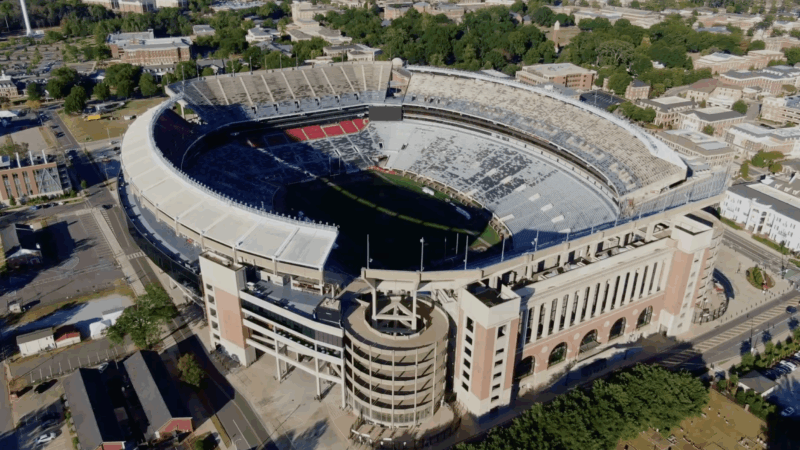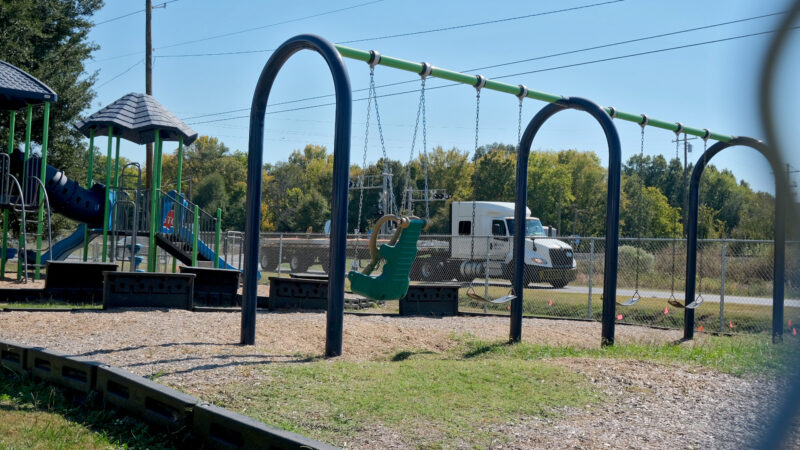An ancient archaeological site meets conspiracy theories — and Joe Rogan
GOBEKLI TEPE, Turkey — Tour guide Sabahattin Alkan herds curious tourists through the scorching afternoon heat, luring them with the promise of something far stranger than your typical vacation snap.
“Over here on the right, you see a spaceship landed recently,” he says with a grin.
He’s joking. Mostly. But more on that in a minute.
We’re in the Urfa plain, a dry, dusty stretch about 25 miles from the Turkish-Syrian border.
That “spaceship” is actually just a curved roof. But what lies beneath the dome has sparked decades of mystery, curiosity — and conspiracy.

“It’s quite an interesting place, actually,” Alkan assures his audience.
He’s talking about Gobekli Tepe, one of the oldest known archaeological sites on Earth, dating back nearly 12,000 years.
Alkan points to T-shaped limestone pillars carved with human arms, hands resting on stomachs, and wild animals: lions, foxes, boars, scorpions and birds among them.
Klaus Schmidt, the German archaeologist who led the site’s first major excavations in the 1990s, called Gobekli Tepe “the world’s oldest temple,” theorizing that it brought together nomadic hunter-gatherers from across the Middle East.

Today, that view has shifted. Some now interpret it as a ceremonial gathering site, while others suggest it functioned as a social hub where rituals helped bind together early communities.
Emilie Salvesen, a tour operator visiting the site, says the question of whether there was a spiritual component to the site still fascinates her.
“Did they experience the divine in the way that we might think of it today?” she asks, gesturing toward one of the inscribed pillars. “I imagine it was much more existential.”
The truth? Still mostly a mystery.
Scientists are regularly adjusting their hypotheses about the site’s intended purpose. And it’s not an easy investigation.
“Whatever we tell now, I don’t know if it will be accurate information or not, because maybe our idea will change in another 50 years,” Alkan says. “We’re trying to predict 12,000 years ago.”
But that uncertainty has thrown the door wide open for one specific group looking for answers: conspiracy theorists.
Conspiracy theories take root — with help from Joe Rogan
Graham Hancock, a British journalist and star of the controversial Netflix series Ancient Apocalypse, has theorized — without empirical evidence — that Gobekli Tepe was built by a “lost civilization” wiped out by an Ice Age cataclysm.
Once confined to the fringes, theories like Hancock’s have gained mainstream traction — thanks in large part to Joe Rogan, whose massively popular podcast has become a platform for alternative takes on science and history.
In November 2024, another Gobekli Tepe conspiracy theorist, Jimmy Corsetti, a YouTuber and self-described “ancient history investigator,” appeared on Rogan’s podcast, bringing with him a slew of speculations and wild theories about the site.
Among them, Corsetti accused archaeologists of intentionally dragging their feet and hiding key discoveries about the site.
“We’re talking about pillars buried in dirt. It’s 2024. Don’t tell me we don’t have the technology!” Corsetti told Rogan.

Corsetti accused archaeologists of moving slowly on purpose, perhaps to preserve the mystery and keep the curious tourists coming.
Only a small percentage of the site has been dug up since excavations began in the mid-1990s. And with Rogan’s platform behind them, theorists like Corsetti have helped turn that slow progress into a source of global suspicion.
A scientist responds
Lee Clare, an archaeologist who has led the excavation site for over a decade, has heard it all — including the outlandish theories.
Speaking from his office in Istanbul, with the Bosporus glinting behind him, Clare shrugs off the conspiracists.

“Some of these guys go to the site for half an hour and think they can explain the whole site,” he says of the budding conspiracy theorists.
When it comes to Gobekli Tepe, Clare says archaeologists aren’t hiding anything. They’re trying to protect it.
“You can’t just bulldoze a site to get everything out. That’s the wrong approach,” he says.
In other words, archaeology moves slowly for a reason. Every layer tells part of the story. And once you dig through each layer, it’s gone for good, as are its secrets.
“Why would I be so selfish as to dig the entire site … and take these possibilities away from future generations of archaeologists?”
Clare says he grew up playing with toy dinosaurs and always wanted to be an archaeologist. He never expected to end up the target of conspiracy theories. But here we are.
“It goes onto the personal level as well,” he says, which is why he deleted his social media accounts.
“I want to stay sane in this situation.”
12,000 years of storytelling
The real danger here isn’t just misinformation, according to Clare. It’s that these competing narratives risk drowning out the real story, the one scientists have spent decades trying to properly decode.
“There are a lot of narratives out there about Gobekli Tepe. The question is, whose narrative is correct? And I think we’ll never know.”
One of the few things scientists do know for sure?
Gobekli Tepe is proof that humans have been storytellers dating back at least 12,000 years.

The carvings on the T-shaped pillars — the lions, foxes and hands — they’re all stories.
We just don’t know what they say. Gobekli Tepe may be the first place humans come together to share meaning.
And like all good stories, this one’s still open to interpretation.
Alabama Power seeks to delay rate hike for new gas plant amid outcry
The state’s largest utility has proposed delaying the rate increase from its purchase of a $622 million natural gas plant until 2028.
Former U.S. Sen. Doug Jones announces run for Alabama governor
Jones announced his campaign Monday afternoon, hours after filing campaign paperwork with the Secretary of State's Office. His gubernatorial bid could set up a rematch with U.S. Sen. Tommy Tuberville, the Republican who defeated Jones in 2020 and is now running for governor.
Scorching Saturdays: The rising heat threat inside football stadiums
Excessive heat and more frequent medical incidents in Southern college football stadiums could be a warning sign for universities across the country.
The Gulf States Newsroom is hiring an Audio Editor
The Gulf States Newsroom is hiring an Audio Editor to join our award-winning team covering important regional stories across Mississippi, Alabama and Louisiana.
Judge orders new Alabama Senate map after ruling found racial gerrymandering
U.S. District Judge Anna Manasco, appointed by President Donald Trump during his first term, issued the ruling Monday putting a new court-selected map in place for the 2026 and 2030 elections.
Construction on Meta’s largest data center brings 600% crash spike, chaos to rural Louisiana
An investigation from the Gulf States Newsroom found that trucks contracted to work at the Meta facility are causing delays and dangerous roads in Holly Ridge.








